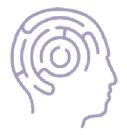 e-mail Leslie
e-mail Leslie
There are four major ways of learning or “coming to know”
– transmission, acquisition, accretion, and emergence.
- Transmission is the process by which information, knowledge, ideas and skills are taught to others through purposeful, conscious telling, demonstration, and guidance. While historically this is the most traditional and, currently, the most predominate method of instruction, unfortunately we are finding out that while prominent in schools, it is not very effective in relation to long-term retention. This is especially true when compared to the other methods of learning like acquisition and emergence.
- Acquisition is the conscious choice to learn. Material in this category is relevant or interesting to the learner. This method includes exploring, experimenting, self-instruction, inquiry, and general curiosity. Because acquisition implies an emotional commitment on the part of the learner, it is a more effective process than transmission.
- Accretion is the gradual, often subconscious or subliminal, process by which we learn things like language, culture, habits, prejudices, and social rules and behaviors. We are usually unaware that the processes involved in accretion are taking place, but this method accounts for a large amount of things humans know and do. Social learning and modeled behaviors as they are passed on and imitated certainly play into this type of learning, as does the hidden or covert curriculum.
- Emergence is the result of patterning, structuring, and the construction of new ideas and meanings that did not exist before, but which emerge from the brain through thoughtful reflection, insight and creative expression or group interactions. This form of learning accounts for the internal capacities of synthesis, creativity, intuition, wisdom, and problem-solving. This method is greatly dependent on the allocation of time, and opportunities to reflect and construct new knowledge. Emergence plays an important role in inspiration and originality. Unfortunately schools rarely allow students to engage in this type of learning because it requires the gift of time. If we think about this conundrum that is a very sad state of affairs, one we could change by re-configuring how we run schools and how we organize learning environments.
Think about it: In the context of these definitions, examine your own learning history, and those learning experiences that were the most meaningful or valuable to you. If teaching or parenting apply, then examine how you teach your children or students as well. Because something is said or spoken does not mean it is learned, recalled, or retained.
Original source for the identification of these four ways of learning comes from Rayala, Martin. (February,1996) Changing your mind: Toward a theory of learning: Applying complexity science to learning as a complex, dynamic system (a working paper, unpublished)1-3. The concepts above were adapted from Rayala’s original discussion as they offer a nice categorical delineation of types of learning and helped promote examinations and discussion on types of teaching that were associated with types of learning. The last address I had for Dr. Marty (Martin) Rayala, formerly of the Wisconsin-DPI, was rayala@kutztown.edu
